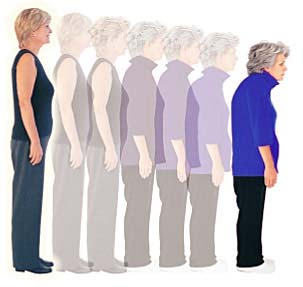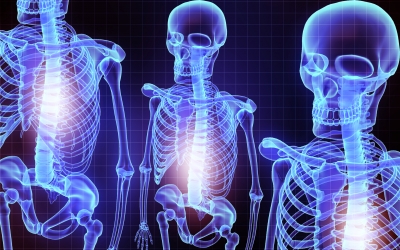Osteoporosis Series Blog 1 – The Silent Thief
In recognition of November being Osteoporosis Month in Canada, I am putting together a 4 week blog series to bring you some important education and awareness on this insidious bone disease that can strike at any age.
I would be happy to meet with you and share more information I learned from my Bone Fit™ Training with Osteoporosis Canada. If you are interested, we could also discuss a bone building exercise program designed just for you!
Osteoporosis – The Silent Thief
When you think of osteoporosis, do you picture an old woman hunched over, walking slowly with a cane or walker? This is often the image that comes to mind, yet osteoporosis can strike at any age. In Canada, 1 in 4 women and 1 in 8 men have osteoporosis. Some may find out suddenly without any symptoms or warning signs from a routine Bone Mineral Density (BMD) Test or suffer a fracture in already thinning, fragile bones from a very minor slip or fall in their wrist, spine, hip or shoulder, the most common sites osteoporotic fractures. 1 in 3 women and 1 in 5 men will suffer from an osteoporotic fracture in their lifetime.
Learning You Have Osteoporosis without Symptoms
Osteoporosis is often called “the silent thief” as it literally steals away bone mass without any symptoms over many years until a fracture occurs. This became real for me when a few of my women friends and two of my training clients in their 50’s and early 60’s expressed their shock and concern upon learning from a routine BMD test they had osteoporosis. I wanted to understand more about osteoporosis and educate myself on this silent thief.
Bone Fit™ Training
I contacted Osteoporosis Canada and was very excited to register for Bone Fit™ an evidence-based exercise training workshop for health professionals. There were many takeaways for me. One in particular was that although osteoporosis is not always preventable, certain risk factors are known, and a safely designed exercise program is one very important strategy to build your bone health. Stay tuned for Blog 2 that will discuss this exercise program in detail.
Achieving Peak Bone Mass & Losing Bone Mass in Menopause
It is also important to note that the more peak bone mass achieved at a younger age, the less likely it is that the bones will become porous and fragile when older. That said, genetics are one of the strong risk factors influencing bone mass and the possibility of osteoporosis and bone fractures in the future. Peak bone mass is achieved between the age of 16-20 years for girls and 20-25 years for boys. Once you’re into your mid 30’s, you can begin to lose about 1% of bone per year and at menopause with estrogen loss, you can begin to lose about 2-3% per year, hence the increase in osteoporosis of women in this life stage and beyond.
Fracture Risk Assessments Tools in Canada
You should ask your doctor on your next visit about the recently launched CAROC and FRAX Fracture Risk Assessments Tools available for women and men 50+ to determine your 10- year fracture risk. Although the Bone Mineral Density test, (BMD) is a very important measure, Osteoporosis Canada feels the assessment tools provide a more accurate prediction of fracture risk and osteoporosis than BMD alone.
Stay tuned for my next blog addressing the 5 important components of a Bone Building Exercise program. In addition, Leanne our ellephysio nutrition consultant, will be blogging after that on nutrition recommendations to help build and absorb calcium into your bones from childhood through your adult years!
For Facts & Statistics on Osteoporosis, visit Osteoporosis Canada’s site.


